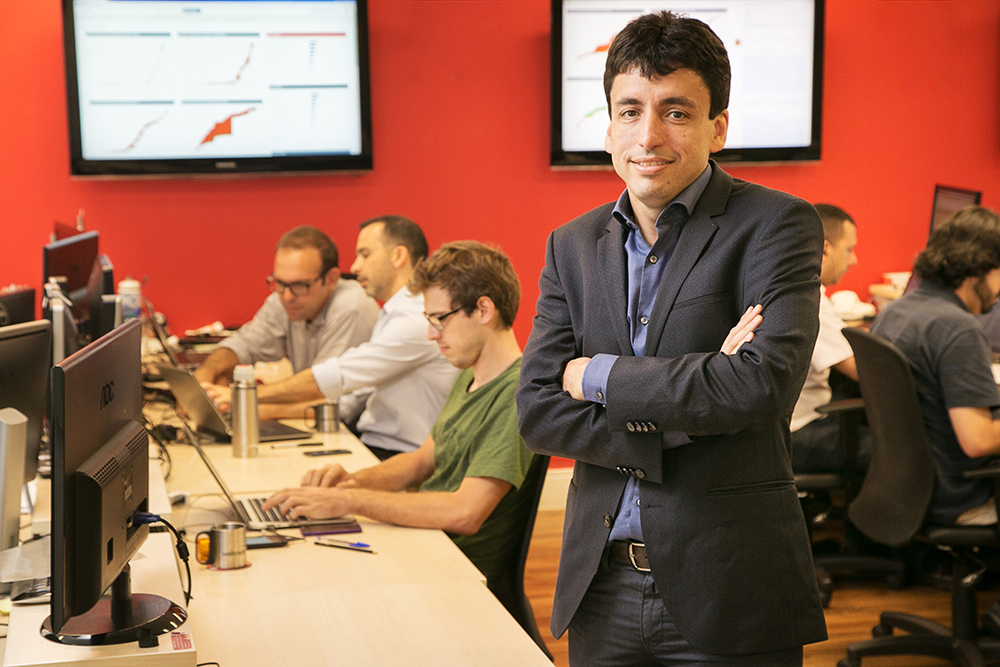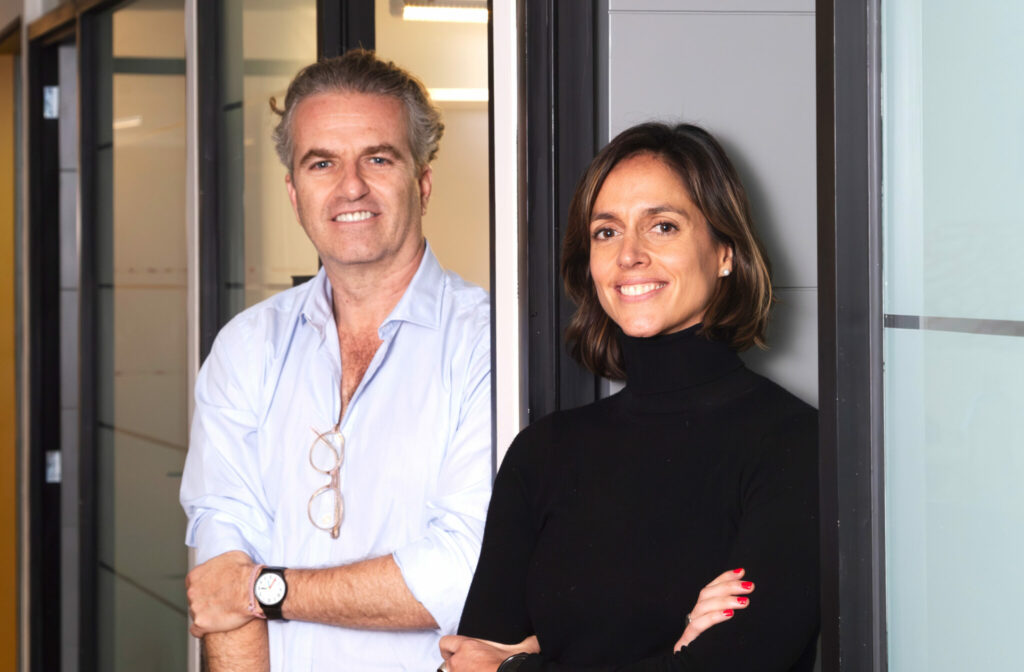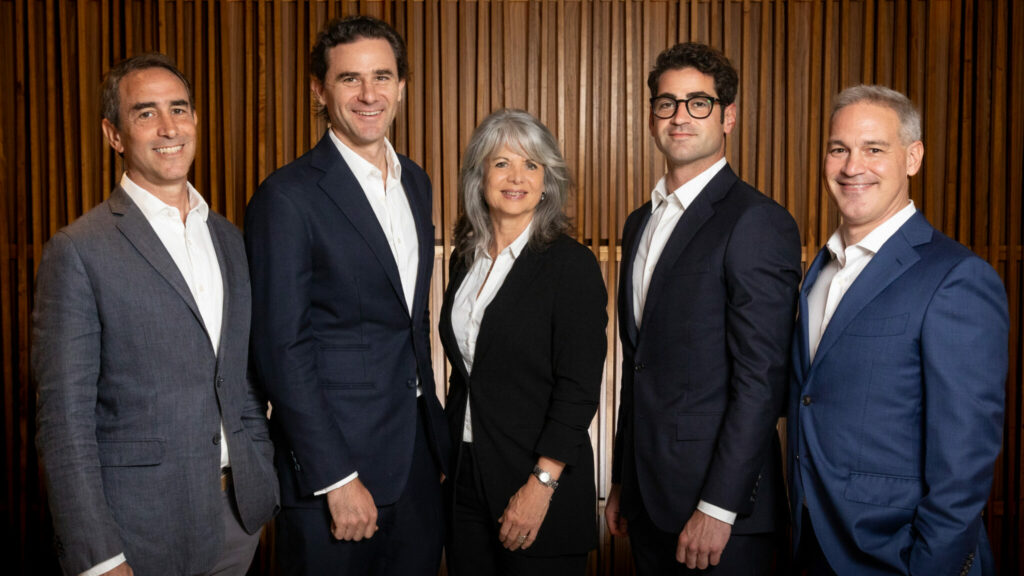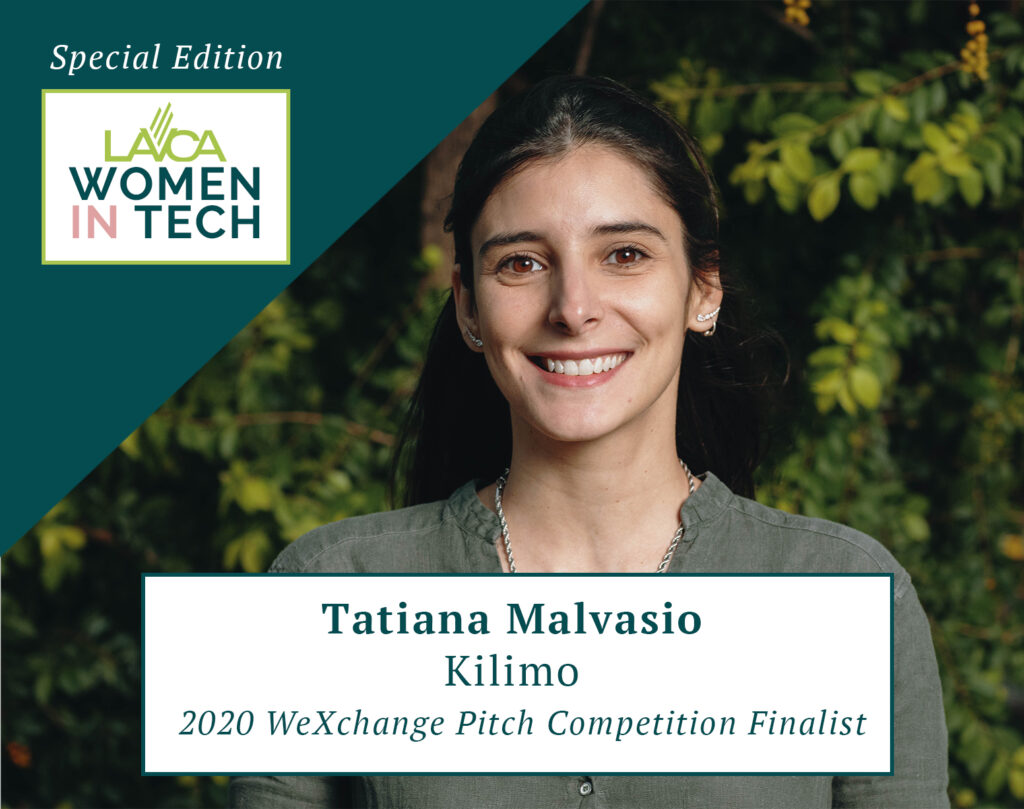Entrepreneur Profiles
Entrepreneur Profile: Adriano da Rocha Lima, WebRadar
31 March 2016

Brazilian startup WebRadar is an international breakout in the big data space, crunching billions of data points per hour to drive efficiencies for clients in three sectors (telco, transportation and energy). Following a R$40M investment from Qualcomm Ventures and DGF Investimentos, LAVCA spoke with WebRadar co-founder and CEO Adriano da Rocha Lima about their newest product release at Mobile World Congress 2016, relationships with strategic investors, and expansion plans.
LAVCA: WebRadar is a breakout player in Big Data and Internet of Things (IoT). What is the business about, and who are your core clients? What is your competitive advantage?
da Rocha Lima: Within the big data segment we have applications and products specific to three verticals: telco, transport, and energy. Almost everything is connected digitally today, not just people, but vehicles, phones, etc. That’s what we call IoT. Instead of people, it’s connected objects.
We bring together the information generated by these devices and smartphones. It’s a gigantic volume of information. We receive about 50 billion new data points per hour on our servers.
Our first big challenge is that we need technology to deal with this mass of data. We use a series of techniques to make sense of the information, find correlations, and find meaning that can help our clients improve operations, reduce costs, and better identify their clients’ needs.
I don’t know any other case in the world where Intel and Qualcomm have invested together… that means we’ve done something right. We’re in the right place in the market.
LAVCA: WebRadar has clients in thirteen countries. Who are they?
da Rocha Lima: Big telco operators like Telefonica and Tim; device providers such as Nokia; logistics/transportation companies like GAFOR Logistica and Jamef; and energy distributors. Energy is our newest vertical, so we’re still developing products for this segment.
We accumulate data from any process generated by the operator. In the case of telco, it is all the information that is not user content, but passes through a phone. When a device connects with the operator, it exchanges a series of messages to connect the phone to the person being called. WebRadar collects all of this information and organizes it in a way that the operator can know what’s happening with each group of clients. You can ask, for example, “What’s the quality of service for people using iPhones in a certain neighborhood in Rio de Janeiro? What problems are they having?” Based on the data analysis, we can say exactly what the operator needs to do to resolve the problem.
We also collect customer complaints from call centers and social networks and use a technique called contextual analysis to interpret if customers are happy or not. Because it can be an overwhelming amount of feedback, which the operator doesn’t have the capacity to quickly analyze, we use contextual analysis to evaluate the tone of the complaint, without reading the content, and then prioritize it accordingly. Keep in mind if an operator has something like 70 million clients and 0.5% call each day, you’re talking about 350,000 calls in a 24-hour period. It’s also difficult for the operator to know what kind of problem might be causing the complaint. We can connect the dots and pinpoint issues, as well as a solutions.
Beyond this, we are launching a product that automatically corrects the problem without someone having to analyze it or make a manual intervention. It’s another level of automation.
LAVCA: Who else is doing this kind of work?
da Rocha Lima: There are other companies in this field, but none in Brazil, and I don’t know of any that are integrating between verticals, most specialize on one sector. We have found that being able to use the information from one vertical and apply it to others improves the quality of our products.
On the other hand, providers like IBM, which are multi-vertical, end up selling more of a service than a product, which could take two years of customization to generate the information needed. WebRadar is specialized, so the product is ready to be used.
LAVCA: What’s the founding story behind WebRadar? When did it start, and how?
da Rocha Lima: WebRadar got started in 2008 by three founders. I used to work in telco as Director of Engineering for Claro, a subsidiary of America Movil, one partner is no longer active operationally, and the other is responsible for one of our areas of technology. We had zero investors from 2008-2013. When I left Claro, I put some of my own money into the company.
By the time our first investor came on in 2013, Intel Capital, we were already making profits and had won a few awards. In fact, Intel sought us out. They thought our platform was an interesting compliment to their client network and the technology cooperation we’ve had is much bigger than the impact of their role as financial investor. As a minority investor, Intel is not on the board. Three months after this investment, Citrix contributed at a higher valuation. It happened very fast. They didn’t execute time intensive due diligence or make any demands. Our next move was to buy a company in the transport sector to facilitate further growth.
When we raised capital in 2015, it was our initiative. In order to take the next step, it made sense to raise another round. We talked to some potential investors and thought Qualcomm and DGF were a good fit, given their profile and the type of the investment they do. Intel also invested again in this round, to make a total R$40M round (~US$10M).
LAVCA: Where are you headquartered, and how big is the team?
da Rocha Lima: Our headquarters is in Rio de Janeiro and we also have an office in São Paulo, with plans to open a third in London. We have about 80 people but are scaling up to 100 in 2016.
LAVCA: What is the talent pool like in Brazil for a technology startup? Are there certain roles that are harder to hire for than others? Why?
da Rocha Lima: It’s not easy to find talent in our focus area. It’s very specialized. We are looking for data scientists and have mainly had success with hiring because WebRadar is well known for having professionals of a very high caliber, which attracts other highly qualified candidates. We have people from abroad, but most of our team is Brazilian.
LAVCA: There’s a lot of talk that innovation comes from Silicon Valley, and the rest of the world is for copycats. WebRadar is clearly an example to the contrary — a Brazilian startup, with a client base in the US, Canada, Mexico, Peru, Argentina, Chile, Bolivia, Italy. What is the upside to building WebRadar from Brazil? Anything from the culture or the way you operate that makes WebRadar distinctly Brazilian?
da Rocha Lima: Our success can be attributed to a number of things, including a top-down focus on understanding innovation through the lens of philosophy. We practice this at the senior level and have even facilitated employee training in philosophy. Philosophy encourages new ways of looking at things to try to observe your environment in a more critical way. That is what is behind innovation in a very strong way for us. We’ve also brought people in to do musical theory training.
With this in mind, we try to observe what’s happening outside of Brazil, identify what is missing, and determine what we can do differently. How can we take advantage of what the market is indicating as an opportunity, but do it differently?
For example, at the Mobile World Congress in Barcelona in February, we launched a new platform that collects data about the functioning of cellular networks from smartphones of taxi drivers. We completed deals with taxi app operators like 99Taxis so the information that’s from the cellular grid that is grabbed by the driver (not the user) is all passed to us. We can use it to measure how the operator is doing in terms of the quality of their network in relation to their competition. Having just launched this product, we are already closing our first contract less than a month later.
LAVCA: What is your most pressing strategic challenge right now? How is the macro environment in Brazil affecting WebRadar?
da Rocha Lima: WebRadar has always had international channels. Our income, since 2013, is mostly from abroad. Almost 100% of our contracts are in dollars (100% for telco, which represents more than 70% of our business; however, transport has more contacts in reais.)
We are operating in more than 10 countries so despite the fact that we are headquartered in Brazil, our competitors are outside of this market and most of our clients as well. It gives us a certain protection in terms of the current market environment. Even the devaluation of the real is favorable for us. Of course, it also increases costs — for example, we buy our servers in dollars.
LAVCA: You have three strategic investors. What are the differences between working with your strategic investors and working with DGF, if any? Have your investors played a role in WebRadar’s growth beyond providing capital?
da Rocha Lima: Qualcomm is very recent — it’s been two months since they invested. But what’s happened so far has been significant. We were just at Mobile World Congress, and beyond the booth that we had for WebRadar, Qualcomm put space for us inside their booth, getting us more exposure.
Qualcomm is also putting us in touch with diverse internal groups — not just tech areas, where we can exchange information, but commercial areas where we can directly contact potential clients.
Intel Capital is extremely well structured to help their portfolio companies. They are the biggest fund of corporate venture in the world and have been around for almost 20 years. For example, they do Intel Technology Day, which brings Intel clients in contact with their portfolio companies. There are more than ten of these events per year across the world. Intel also organizes the Global Summit once a year in California, where they bring together all the CEOs of the companies they’ve invested in, with all their tech clients and partners. Qualcomm also has a similar event. Citrix has a smaller participation as an investor. They support us, but in a more discreet manner.
As a financial investor, DGF has helped a lot with our acquisition strategy. We’re looking at some potential companies to acquire, and their experience will be invaluable. Since DGF invests in other companies, they also promote cooperation between their portfolio companies, and are well positioned in the market to bring us interesting networking opportunities.
I don’t know any other case in the world where Intel and Qualcomm have invested together. They are such big competitors. The fact that we brought these two players together means we’ve done something right. We’re in the right place in the market.
LAVCA: The new round of financing will be allocated towards international expansion and developing new products. Can you share anything more specific about your target expansion markets, or the new product offerings?
da Rocha Lima: This investment is based in three pillars. The first is acquisitions.
The second is our product road map. We want to speed it up and bring our products to the market faster. This is what we did with the taxi data project. We only planned it for the end of the year, but we cut the launch by nine months. Other products are going to follow that same path.
The third pillar is expansion. Even though we are in countries across the globe, until now this international expansion was done in a passive way. We ended up getting contacted by clients abroad, and started growing organically. Now we are looking at structured growth. We’ve contracted people to represent us in Europe, with plan to open our office in London very soon. We did research with Anderson School at UCLA about internationalization to see what kind of investment we needed to enter the US market and are following this strategy.
LAVCA: Do you have any advice for future investors interested in WebRadar or the IoT sector?
da Rocha Lima: Currently we can implement our business plan without needing another round of investment, but the market is very dynamic. While we don’t see an immediate need to raise more capital, an opportunity could arise to acquire a company that we didn’t foresee so we are open to the idea down the line.
In general, we’ll never pass on a conversation with an investor. Sometimes it’s not just money; sometimes it’s about other opportunities they can bring to the table, like unique proposals to work with their portfolio companies.
You may be interested in...
-

Is AI a Thing in Latin America? In Conversation with Hi Ventures
LAVCA sits down with Hi Venture to discuss their evolving thesis and vision for...
-

The Future of B2B Startup Investing in LatAm: In Conversation with NXTP
NXTP Ventures recently reached a USD98m final close for NXTP Fund III, its third...
-

A 20-Year Journey: An Interview with Technisys CEO Miguel Santos
Company: Technisys Investors: KASZEK, Dalus Capital, Riverwood Capital Interview...
-

Satellite Analytics & Irrigation Systems: Interview with Kilimo COO Tatiana Malvasio
Company: Kilimo Investors: NXTP Ventures, Alaya Capital, The Yield Lab, Xpand...